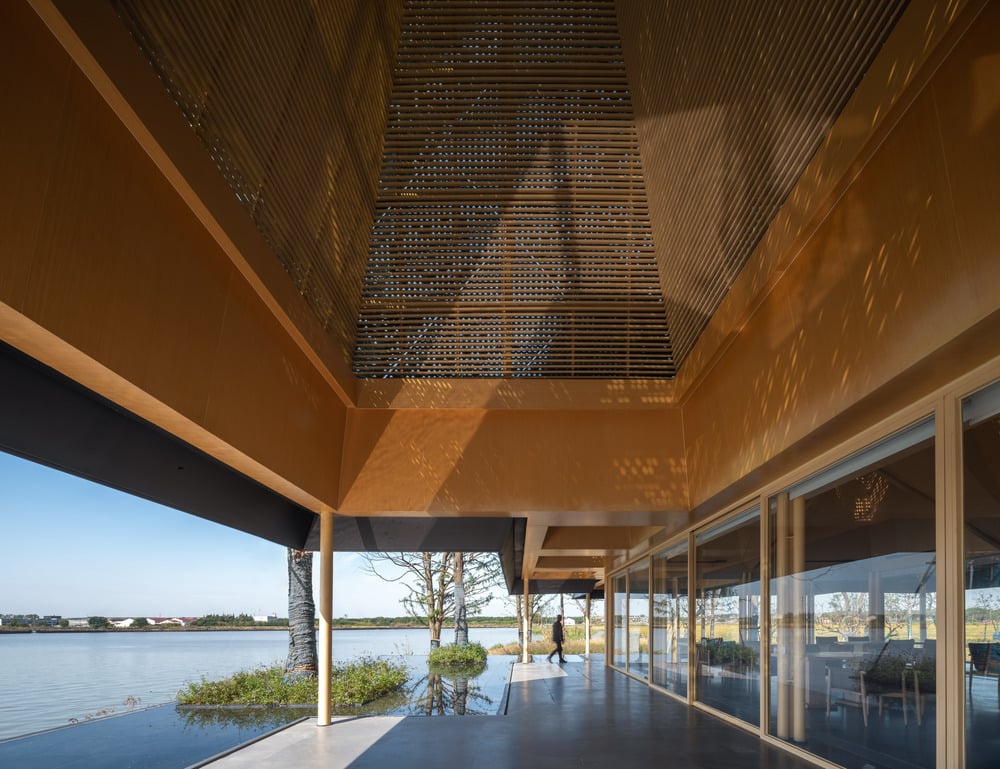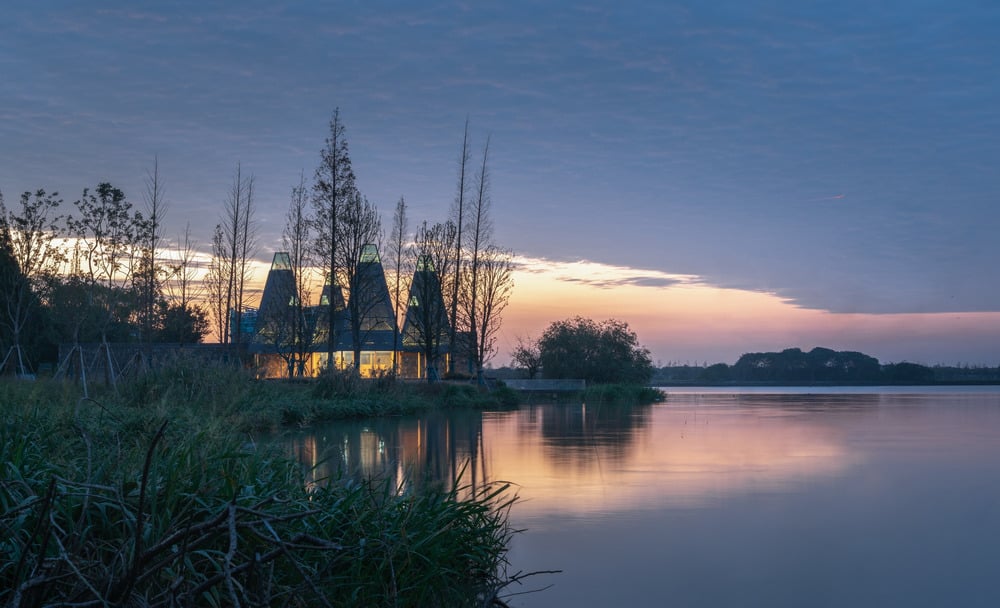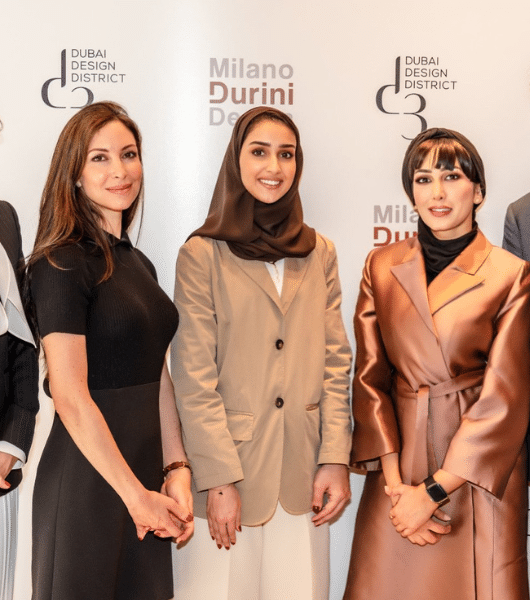GOA’s Metasequoia Grove Restaurant in Jiangsu Province, China, echoes a landscape that immerses in its natural context
 Restaurant of Metasequoia Grove is located at the west end of Shanwan Village in the countryside of Suzhou, a typical waterside village of the Jiangnan region, situated on the vast swamp plain of Taihu. Being the first constructed phase of a low-rise leisure-led complex development by The Group of Architects (GOA), the restaurant functions as a dining space for visitors, as well as a small banquet hall for holding a variety of public events. Rather than being just an architectural construction, the project is more of a landscape that immerses into its natural context, eventually becoming part of nature. It delivers joyful moments by the water, and peaceful nature experiences where architecture enables new ways of seeing the landscape.
Restaurant of Metasequoia Grove is located at the west end of Shanwan Village in the countryside of Suzhou, a typical waterside village of the Jiangnan region, situated on the vast swamp plain of Taihu. Being the first constructed phase of a low-rise leisure-led complex development by The Group of Architects (GOA), the restaurant functions as a dining space for visitors, as well as a small banquet hall for holding a variety of public events. Rather than being just an architectural construction, the project is more of a landscape that immerses into its natural context, eventually becoming part of nature. It delivers joyful moments by the water, and peaceful nature experiences where architecture enables new ways of seeing the landscape.
 A grove of metasequoia trees onsite, standing by an enormous expanse of water, becomes the only nature skyline in this plain terrain. The forms of the metasequoia trees are abstracted and translated into a purely geometric architectural language, a pyramidal frustum, and are applied to the Restaurant of Metasequoia Grove as a featuring icon and a modular inspiration for the design. The pyramidal frustum module takes three sizes and forms small-medium-large modular order according to the proportional relation of the square’s side length on the bottom of 2:3:4. Three different scales of modules mix and cluster together, forming a continuous canopy structure that traces an artificial forest profile within nature to simulate the natural substances’ generative process.
A grove of metasequoia trees onsite, standing by an enormous expanse of water, becomes the only nature skyline in this plain terrain. The forms of the metasequoia trees are abstracted and translated into a purely geometric architectural language, a pyramidal frustum, and are applied to the Restaurant of Metasequoia Grove as a featuring icon and a modular inspiration for the design. The pyramidal frustum module takes three sizes and forms small-medium-large modular order according to the proportional relation of the square’s side length on the bottom of 2:3:4. Three different scales of modules mix and cluster together, forming a continuous canopy structure that traces an artificial forest profile within nature to simulate the natural substances’ generative process.
 The canopy’s overall height control is under 12m. Each pyramidal frustum module is topped by a skylight that allows natural light to enter the architecture more moderately. The roof system is divided into three layers: customised perforated aluminum panels as the outer layer, textures as the layering crowns of metasequoia trees; glass as the middle layer introducing greater luminosity; and grilled wood panels cover the inner layer. Eaves of the canopy are uniformly lowered to 2.7m, framing a horizontal scroll of wetland scenery that captures the vastness and tranquility in the imagination of a traditional Chinese painting.
The canopy’s overall height control is under 12m. Each pyramidal frustum module is topped by a skylight that allows natural light to enter the architecture more moderately. The roof system is divided into three layers: customised perforated aluminum panels as the outer layer, textures as the layering crowns of metasequoia trees; glass as the middle layer introducing greater luminosity; and grilled wood panels cover the inner layer. Eaves of the canopy are uniformly lowered to 2.7m, framing a horizontal scroll of wetland scenery that captures the vastness and tranquility in the imagination of a traditional Chinese painting.
To emphasise the lightness of the canopy, the load-bearing columns of the restaurant are minimised to 10, arranged around the interior edges of the interior space. Each load-bearing column is grouped by a cluster of 3 slender steel columns, each individually with a diameter of 10cm. Only 11 steel columns with a diameter of 15cm are set along the edge of the exterior terrace under the eaves. Each cluster of columns aligns with a corresponding edge of the wooden ceiling structure and window frames, united in colour.
 The design also adopts a series of strategies to maximise the transparency between interior and exterior by erasing the boundary. For example, the consistent paving material of the restaurant space to the under-eave terrace allows a sense of space extension connecting with a peripheral infinity waterscape, which integrates with the existing water body to create coherence between the architecture and the natural wetland. Also, customised single-bay floor-to-ceiling windows, with a width of over 2m and narrow frames, enhance the great visual openness of the space.
The design also adopts a series of strategies to maximise the transparency between interior and exterior by erasing the boundary. For example, the consistent paving material of the restaurant space to the under-eave terrace allows a sense of space extension connecting with a peripheral infinity waterscape, which integrates with the existing water body to create coherence between the architecture and the natural wetland. Also, customised single-bay floor-to-ceiling windows, with a width of over 2m and narrow frames, enhance the great visual openness of the space.
Photographer: ©IN BETWEEN







